Class 7 Exam > Class 7 Notes > Social Studies (SST) Class 7 (Old NCERT) > NCERT Summary: Air
Air Summary Class 7 Geography Chapter 4
Atmosphere
- A huge blanket of air that surrounds earth is called atmosphere.
- It provides us the air we breathe and protects us from the harmful effects of the sun’s rays which is essential for our survival.
Composition of the Atmosphere
- Nitrogen and oxygen are two gases which make up the bulk of the atmosphere.
- Carbon dioxide, helium, ozone, argon and hydrogen are found in lesser quantities.
- Apart from these gases, particles are also present in the air.
- Percentage of different constituents of air:
- Nitrogen: 78 %
- Oxygen: 21 %
- Argon: 0.93 %
- Carbon Dioxide: 0.03 %
- All Others: 0.04 %
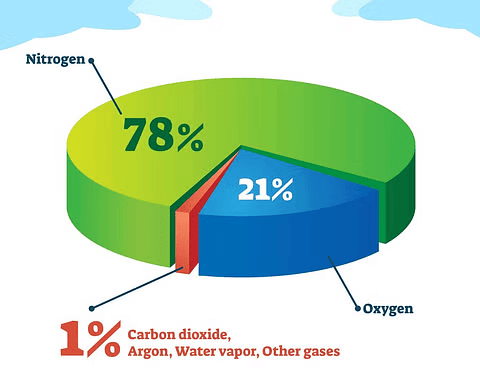
1. Nitrogen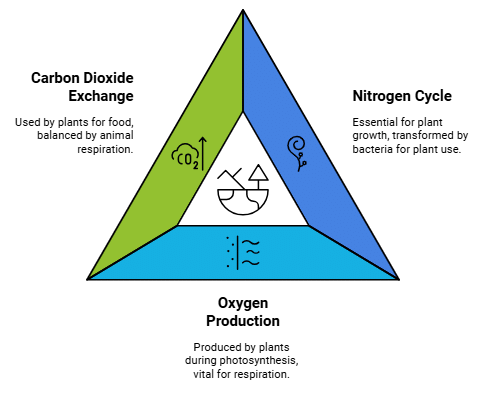
- Plants need nitrogen for their survival. They can not take nitrogen directly from the air. Bacteria, that live in the soil and roots of some plants, take nitrogen from the air and change its form so that plants can use it.
2. Oxygen
- Humans and animals take oxygen from the air as they breathe.
- Green plants produce oxygen during photosynthesis which make oxygen content in the air remains constant.
3. Carbon Dioxide
- Green plants use carbon dioxide to make their food and release oxygen.
- Humans or animals release carbon dioxide which is equal to the amount used by the plants which make a perfect balance.
- However, the balance is upset by burning of fuels, such as coal and oil which result in increased volume of carbon dioxide that affecting the earth’s weather and climate.
Structure of Atmosphere
Atmosphere is divided into five layers starting from the earth’s surface: 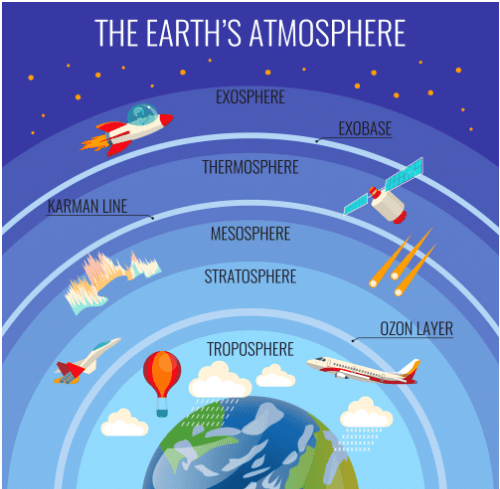
1. Troposphere
- The most important layer as the air we breathe exists here and almost all the weather phenomena like rainfall, fog and hailstorm occur in this layer.
- Its average height is 13 km.
2. Stratosphere
- It lies above the troposphere.
- It extends up to a height of 50 km.
- This layer is almost free from clouds and associated weather phenomenon, making conditions most ideal for flying aeroplanes.
- It contains a layer of ozone gas which protects us from the harmful effect of the sun rays.
3. Mesosphere
- Third layer of the atmosphere which lies above the stratosphere.
- It extends up to the height of 80 km.
- Meteorites burn up in this layer on entering from the space.
4. Thermosphere
- Temperature rises very rapidly with increasing height in this layer.
- Ionosphere is a part of this layer.
- It extends between 80-400 km.
- This layer helps in radio transmission.
5. Exosphere
- The upper most layer of the atmosphere is known as exosphere.
- This layer has very thin air.
- Light gases like helium and hydrogen float into the space from here.
Weather and Climate
- Weather is this hour-to-hour, day to day condition of the atmosphere.
- It can change dramatically from day to day.
- The average weather condition of a place for a longer period of time represents the climate of a place.
Temperature
- The degree of hotness and coldness of the air is known as temperature.
- The temperature of the atmosphere changes not only between day and night but also from season to season.
- Insolation is an important factor that influences the distribution of temperature.
- Insolation is the incoming solar energy intercepted by the earth.
- The amount of insolation decreases from the equator towards the poles. Therefore, the temperature decreases in the same manner.
- Temperature in cities is much higher than that of villages.
- The concrete and metals in buildings and the asphalt of roads get heated up during the day which is released during the night.

Air Pressure
- Air pressure is defined as the pressure exerted by the weight of air on the earth’s surface.
- The air pressure is highest at sea level and decreases with height.
- Horizontally the distribution of air pressure is influenced by temperature of air at a given place.
- Where temperature is high the air gets heated and rises which creates a low-pressure area.
- Low pressure is associated with cloudy skies and wet weather.
- Where temperature is low, the air is cold and therefore, heavy. Heavy air sinks and creates a high pressure area.
- High pressure is associated with clear and sunny skies.
- The air always moves from high pressure areas to low pressure areas.
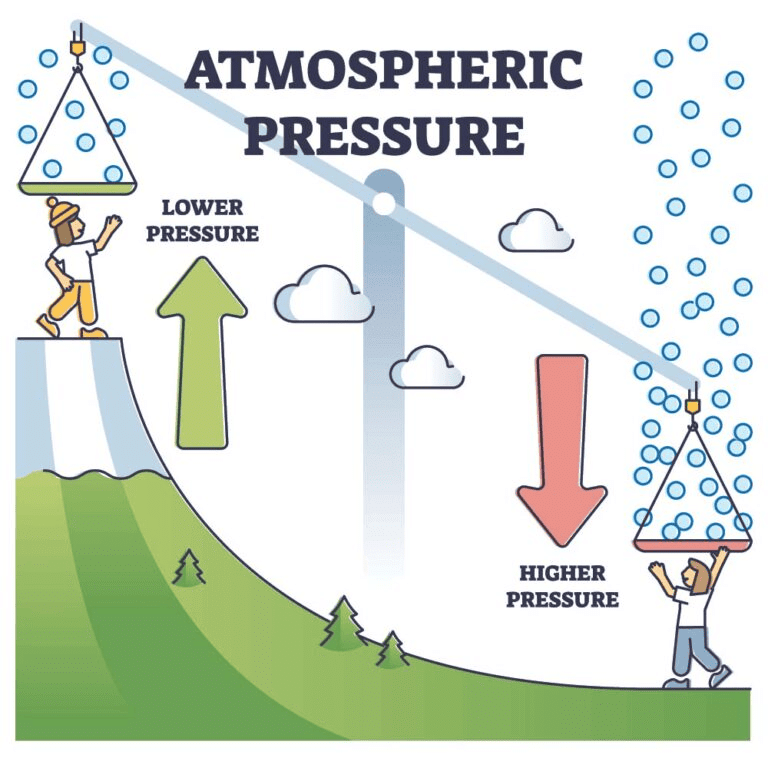
Wind
- The movement of air from high pressure area to low pressure areas is called wind.
- Winds can be broadly divided into three types:
- Permanent winds: The trade winds, westerlies and easterlies are the permanent winds. These blow constantly throughout the year in a particular direction.
- Seasonal winds: These winds change their direction in different seasons. For example monsoons in India.
- Local winds: These blow only during a particular period of the day or year in a small area. For example, land and sea breeze.
- The hot and dry local wind of northern planes of India is called loo.
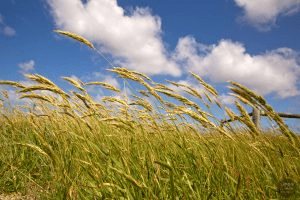
Moisture
- When water evaporates from land and different water bodies, it becomes water vapour.
- Moisture in the air at any time, is known as humidity. When the air is full of water vapour we call it a humid day.
- As the air gets warmer, its capacity to hold the water vapour increases and so it becomes more and more humid.
- When the water vapour rises, it starts cooling.
- The water vapour condenses causing formation of droplets of water. Clouds are just masses of such water droplets.
- When these droplets of water become too heavy to float in air, then they come down as precipitation.
- Precipitation that comes down to the earth in liquid form is called rain.
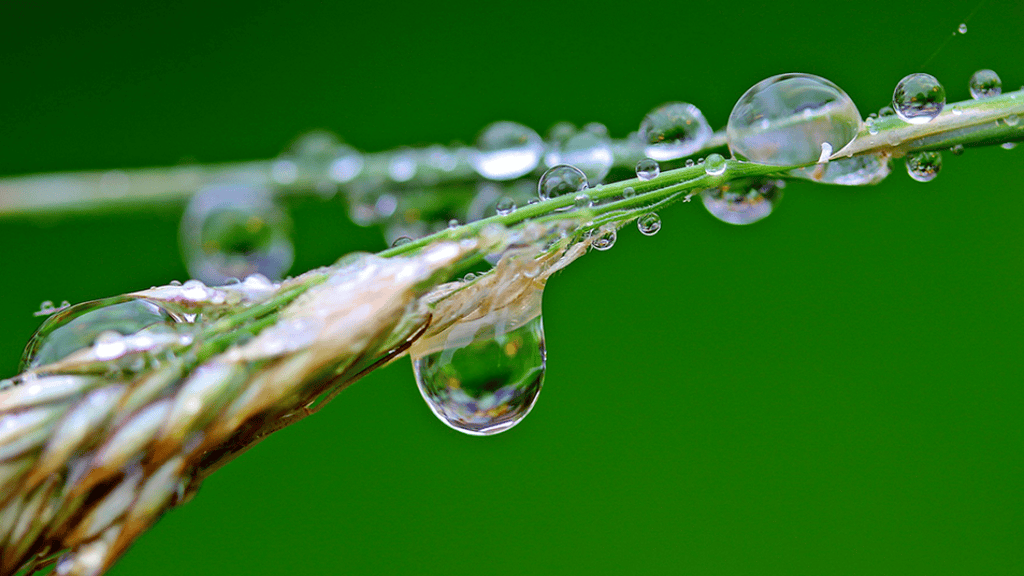
- There are three types of rainfall:
- the convectional rainfall
- the orographic rainfall
- the cyclonic rainfall
- Importance of Rainfall:
- It is very important for the survival of plants and animals.
- It brings fresh water to the earth’s surface.
If rainfall is less – water scarcity and drought occur. On the other hand if it is more, floods take place.
The document Air Summary Class 7 Geography Chapter 4 is a part of the Class 7 Course Social Studies (SST) Class 7 (Old NCERT).
All you need of Class 7 at this link: Class 7
|
63 videos|371 docs|46 tests
|
FAQs on Air Summary Class 7 Geography Chapter 4
| 1. What is the composition of air? |  |
Ans. Air is a mixture of different gases. The main components of air are nitrogen (about 78%), oxygen (about 21%), argon (approximately 0.93%), carbon dioxide (about 0.04%), and small amounts of other gases. Water vapor is also present in varying amounts.
| 2. Why is air important for living organisms? |  |
Ans. Air is essential for life as it provides oxygen, which is necessary for respiration in animals and humans. Plants also need carbon dioxide from the air for photosynthesis, a process that produces food and oxygen, supporting life on Earth.
| 3. How does air pressure change with altitude? |  |
Ans. Air pressure decreases with increasing altitude. As you go higher in the atmosphere, the amount of air above you decreases, leading to lower pressure. This is why people may experience difficulty breathing at high altitudes, as there is less oxygen available.
| 4. What are the pollutants found in the air? |  |
Ans. Air pollutants include substances like carbon monoxide, sulfur dioxide, nitrogen oxides, particulate matter, and volatile organic compounds. These pollutants can come from vehicles, industrial emissions, and other human activities, and they can harm health and the environment.
| 5. How can we reduce air pollution? |  |
Ans. To reduce air pollution, we can use public transport, carpool, or bike instead of using individual vehicles. Additionally, using cleaner fuels, conserving energy, and promoting green spaces can help improve air quality. Planting trees also plays a significant role in absorbing carbon dioxide and producing oxygen.
Related Searches






















